#レオーナ
Explore tagged Tumblr posts
Text
【VR】太陽の戦士レオーナ 魔人の復讐 : ペイン&ゲインとの戦いで命を

由于与玻璃窗&增益的斗争丢掉性命了的reona。那个灵魂正被囚于首尔监狱这个灵魂的监牢。首尔监狱是被在reona打倒了的魔人们的墓地,并且想要在reona实现报仇,认为reona的死了是绝好的机会的魔人们正计划!作为出自没有什么被说在了的复数的魔人的壮烈的拷问的实际现在在"太阳的战士reona PTA魔人hisuteria编"明白! 【VR】太陽の戦士レオーナ 魔人の復讐 の動画等
17 notes
·
View notes
Text
BLEACH - Resurrección
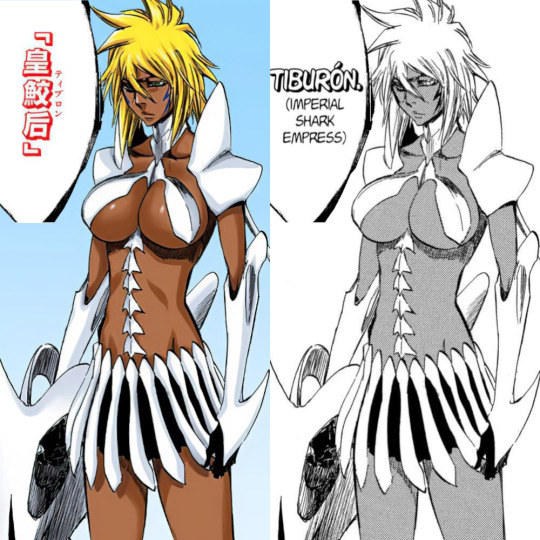
Tier Harribel’s is another that, like most of the late stage Espada, came across as a rush job --like Kubo was trying to bide his time to come up with an idea, but then ran out of time and had to just make a snap decision. The katakana テ��ブロン “Ti-bu-ro-n’” are a pretty simple approximation of the Spanish Tiburón, meaning “Shark”. The kanji reads 皇鮫后 “Imperial Shark Empress.”
There’s not really much of a theme. It doesn’t really communicate anything about her character. It’s not even related to her supposed element of death, not that she really embodies it effectively anyway. And in fact Kubo routinely fills space with his halfassed name by just slapping things like Prince, Soldier, or General onto an animal.
The release cal is 討て: “Ute” which broadly means “to pursue and attack (a criminal).” Viz translated this as "Hunt" which is not really how you’d translate the word but oddly it does communicate the proper idea and creates an extra level of appropriateness in tying it to a shark’s hunting behavior. A rare case of Viz actually doing a good job translating.

The katakana reads シエルバ: “Shi-e-ru-ba” as an approximation of Cierva, Spanish for “Doe” a female deer.
Notably the Japanese syllabic system has some limitations. The set of “S-” sounds includes, “Sa,” “Shi,” “Su,” “Se,” and “So.” There is no “Si” sound, so “Shi” is the closest approximate. Similarly the “T-” set (used above for Tiburon) includes “Ta,” “Chi,” “Tsu,” “Te,” and “To.” To designate the “Ti” sound for Tiburon, requires the compound of テ:Te and a diminutive ィ:-i. Generally the small kana are used in more common compound sounds like シャ:Sha, シュ:Shu, ショ:Sho, combining シ:Shi and small ャ:ya ュ:yu, ョ:yo, respectively. Just thought I’d point that out now that it’s happened a few times.
碧: “Blue/Green,” 鹿: “Deer,” 闘: “Battle,” and 女: “Girl.” Notably the 碧: “Blue/Green” here is very likely non-literal; archaic Japanese did not denote a difference between Blue and Green as colors and treated them as differing shades of the same core color. The “Blue/Green” here is commonly used colloquially to mean “young” or “immature,” referencing an unripe fruit. (This is actually the exact same etymology as the English use of “Green” to mean the same thing.) So the interpretation might more readily be read as “Young Deer” i.e. “Fawn.” So, “Fawn Battle Girl.”
Her release call is 突き上げろ: “tsukiagero” meaning “to thrust up” either like a push or a full on toss. In the context of her being a deer and having deer antlers(despite being a fawn and a doe, not a stag) it describes the way deer butt heads and antlers when competing for mates.
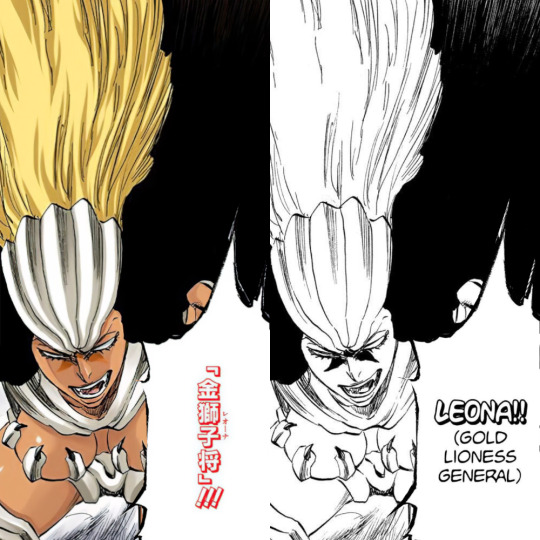
The katakana here is, レオーナ:“Re-oo-na,” and approximate of Leona, meaning “Lioness.”
Curiously it’s also a slang for “Hunger” in some Spanish dialects, as well as a pejorative for “slut” in others. I don’t really know if Kubo knew that when he named her, or not, but there are some superficial cases to make for both readings being intentional. But it could also very easily just be a coincidence.
The kanji is kind of odd to read 金獅: “Golden Lion,” 子: “Child”/“Young woman” also a common suffix for a girl’s name, and 将:“(Military)General.” It could be read as “Golden-Lion” and “Lady General” or as “Golden Lion-cub General” or “Golden Lioness General.” I think the latter makes the most sense, but I’m not actually sure if that’s how that construction would work. Incidentally the 金将: “Gold General” is a piece in the Japanese board game, Shogi; a game very similar to western chess.
Her release call is 喰い散らせ: “kuichirase” which Viz translated erroneously as "Eat Your Fill." Individually 喰い: “Eat” and 散らせ:“Scatter” but also “Dissolve” as in “Break into pieces;” basically meaning here, “to Eat and break into little pieces,” which feels very awkward to try and say succinctly in English, but could be translated like, “Eat (Leaving only crumbs).” I’ve seen it translated by fan translators as “Devour” which has some implication of being all consuming, and thus leaving being nothing or little. It’s a round about link but it does feel like it works better than any of the alternatives.
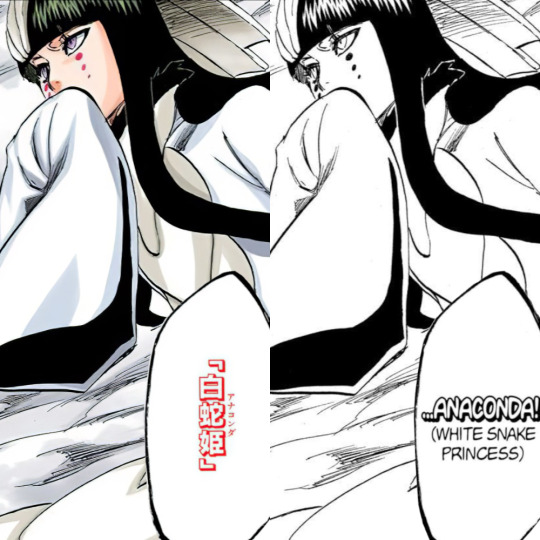
Katakana is アナコンダ:“A-na-ko-n’-da” obviously the Spanish word Anaconda, and the anaconda is of course a species of snake from South America in the first place so it’s not like there’s an “English translation” for it. Anaconda is just anaconda. The kanji 白蛇姫 just translates pretty directly as “White-Snake Princess” or “White-Snake Young-Lady(of noble birth).” But the name here is a clear reference to the Chinese opera, The Legend of the White Snake, which is also known as Madame White-Snake. So really the name should probably be translated as “White-Snake Madame” or “Madame White-Snake.”
The release call is 絞め殺せ: “shimekorose” which as far as I’ve ever seen is also accurately translated as “Strangle to death.”
I’ve got more of these Resurreccion posts btw: [1] [2] [3] [4] [5] [6] [7]
62 notes
·
View notes
Text

6 notes
·
View notes
Text

2 notes
·
View notes
Text

3 notes
·
View notes
Text
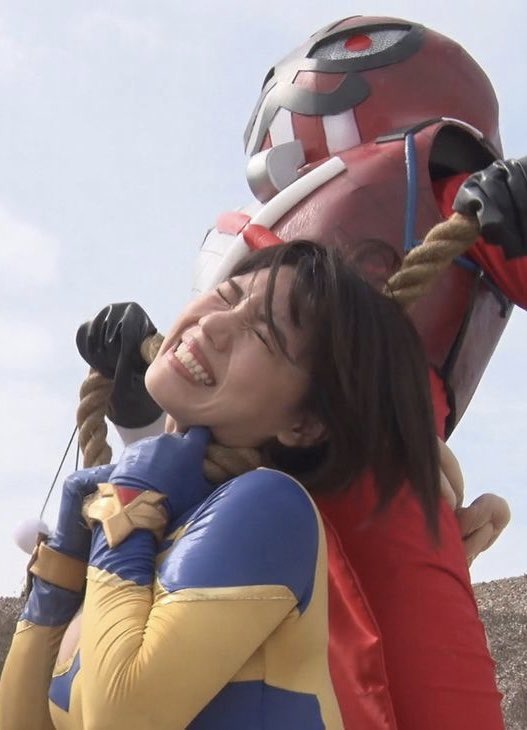
3 notes
·
View notes
Text

2 notes
·
View notes
Text

3 notes
·
View notes
Text
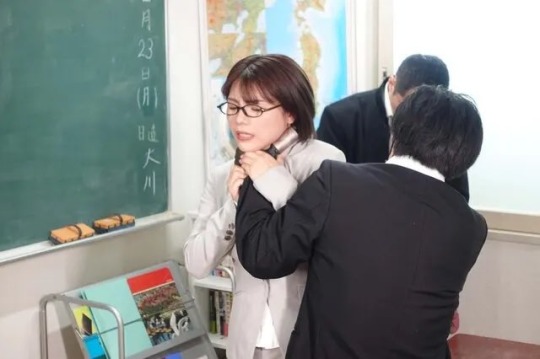
3 notes
·
View notes






